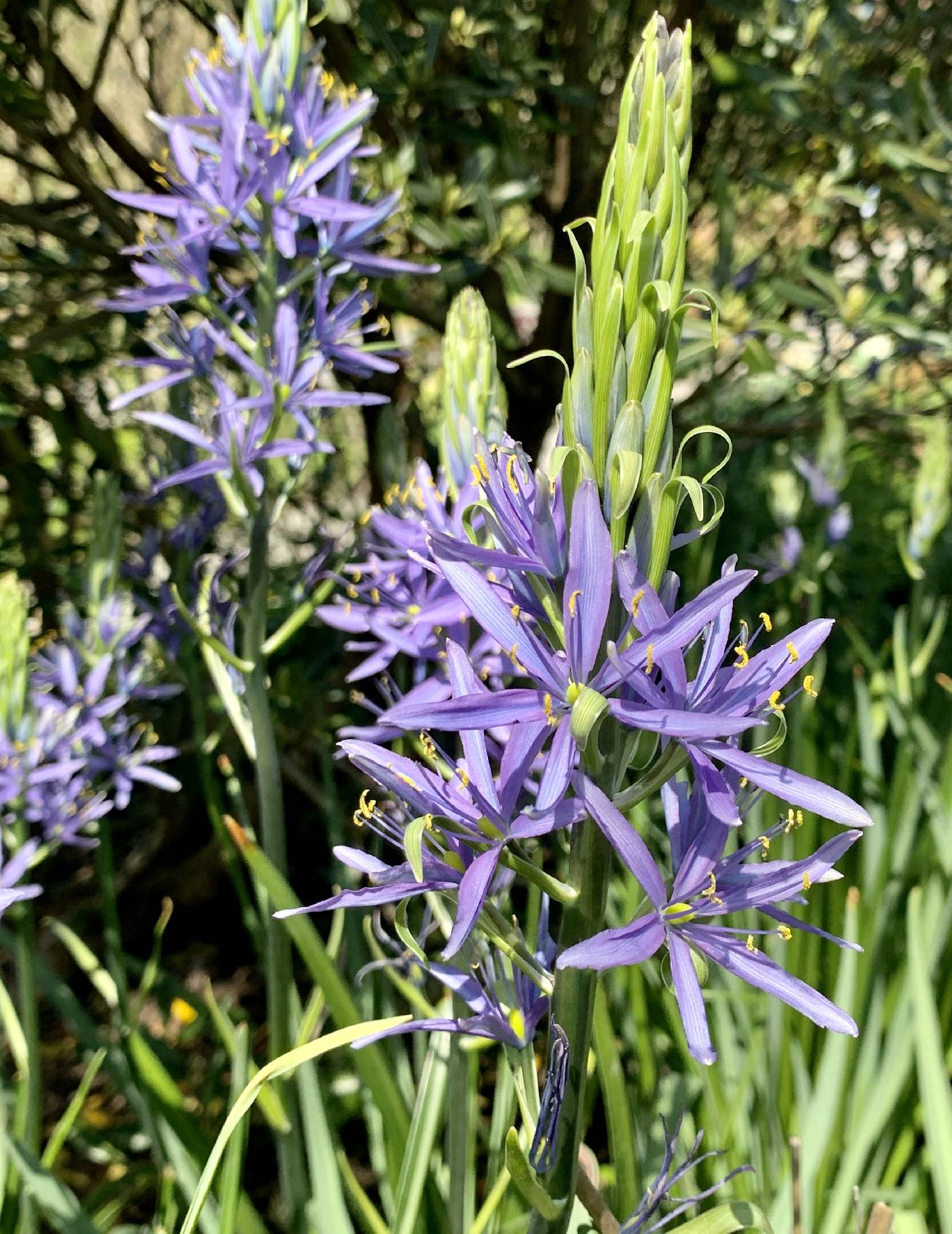Camassia
|
Family: Asparagaceae |
Cmassia has been associated with other western North American genera of Liliaceae such as Schoenolirion, Hastingsia, and especially Chlorogalum (F. Speta 1998; M. Pfosser and F. Speta 1999), but recent molecular evidence (D. J. Bogler and B. B. Simpson 1996; M. F. Fay and M. W. Chase 1996) suggests that it may be related instead to the Agavaceae. Furthermore, the bimodal, 2n = 30 karyology of Camassia (A. Fernandez and J. R. Davina 1991) is similar to that of Agavaceae (D. Satô 1935) and not that of Chlorogalum. Camassia bulbs have been an important food staple for native Americans, especially in the Pacific Northwest (G. R. Downing and L. S. Furniss 1968; N. J. Turner and H. V. Kuhnlein 1983), where bulbs were dug and traded on large encampment meadows. Similarity to the poisonous bulbs of Zigadenus ('death camas') is a concern where ranges of the two genera overlap. Several Camassia species are cultivated and represent a major horticultural contribution from the native flora. Variation and intergradation of C. angusta and C. scilloides have been reviewed by T. A. Ranker and A. F. Schnabel (1986), as well as J. A. Steyermark (1961), R. O. Erickson (1941), and F. W. Gould (1942).
Fls regular or slightly irregular; tep essentially alike, spreading, separate, sessile or short-clawed, 3-7-nerved; stamens 6, hypogynous; filaments filiform, elongate; anthers linear-oblong, introrse, versatile; ovules numerous; style solitary, slender, the stigma 3-lobed; fr a loculicidal capsule with few to several seeds; perennial from coated bulbs, with several linear basal lvs, an erect scape, and a loose, terminal, bracteate raceme of showy white to blue or violet fls. 5, N. Amer. Gleason, Henry A. & Cronquist, Arthur J. 1991. Manual of vascular plants of northeastern United States and adjacent Canada. lxxv + 910 pp. ©The New York Botanical Garden. All rights reserved. Used by permission. |

